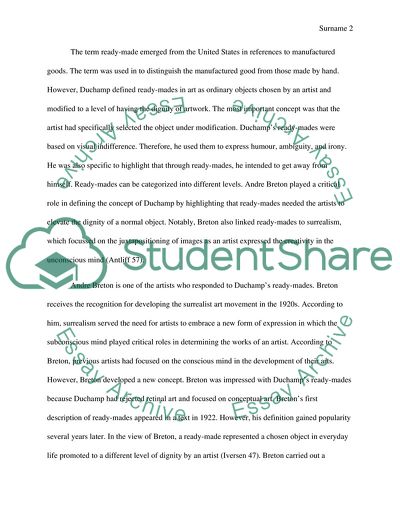Cite this document
(Duchamp as a Pioneer of Ready-Mades Coursework Example | Topics and Well Written Essays - 1750 words, n.d.)
Duchamp as a Pioneer of Ready-Mades Coursework Example | Topics and Well Written Essays - 1750 words. https://studentshare.org/visual-arts-film-studies/1869841-ready-mades
Duchamp as a Pioneer of Ready-Mades Coursework Example | Topics and Well Written Essays - 1750 words. https://studentshare.org/visual-arts-film-studies/1869841-ready-mades
(Duchamp As a Pioneer of Ready-Mades Coursework Example | Topics and Well Written Essays - 1750 Words)
Duchamp As a Pioneer of Ready-Mades Coursework Example | Topics and Well Written Essays - 1750 Words. https://studentshare.org/visual-arts-film-studies/1869841-ready-mades.
Duchamp As a Pioneer of Ready-Mades Coursework Example | Topics and Well Written Essays - 1750 Words. https://studentshare.org/visual-arts-film-studies/1869841-ready-mades.
“Duchamp As a Pioneer of Ready-Mades Coursework Example | Topics and Well Written Essays - 1750 Words”. https://studentshare.org/visual-arts-film-studies/1869841-ready-mades.


